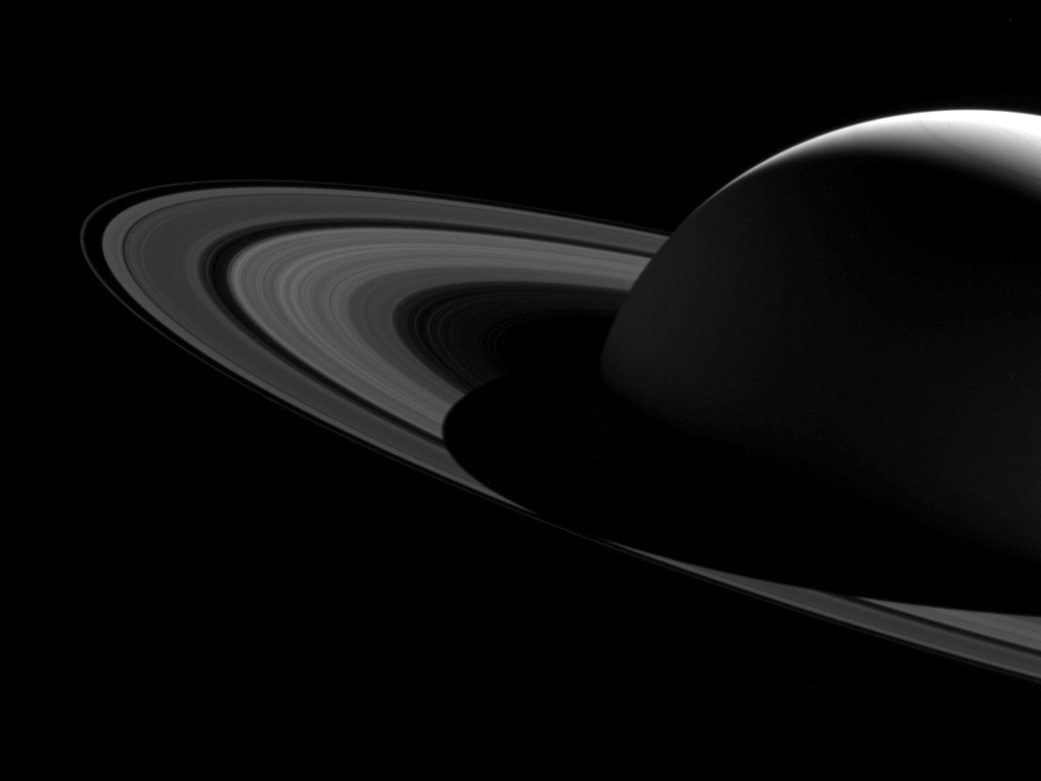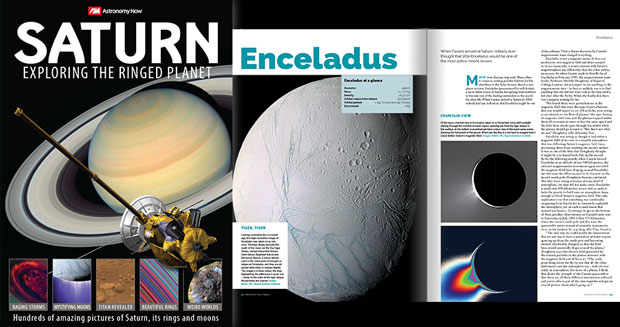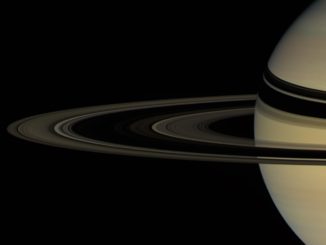
Saturn’s shadow stretched beyond the edge of its rings for many years after the NASA/ESA/ASI Cassini spacecraft first arrived at Saturn, casting an ever-lengthening shadow that reached its maximum extent at the planet’s 2009 equinox. This image captured the moment in 2015 when the shrinking shadow just barely reached across the entire main ring system. The shadow will continue to shrink until the planet’s northern summer solstice, at which point it will once again start lengthening across the rings, reaching across them in 2019.
Like Earth, Saturn is tilted on its axis. And, just as on Earth, as the sun climbs higher in the sky, shadows get shorter. The projection of the planet’s shadow onto the rings shrinks and grows over the course of its 29-year-long orbit, as the angle of the Sun changes with respect to Saturn’s equator.
This view looks toward the sunlit side of the rings from about 11 degrees above the ring plane. The image was taken in visible light with the Cassini spacecraft wide-angle camera on 16 January 2015.
The view was obtained at a distance of approximately 1.6 million miles (2.5 million kilometres) from Saturn. Image scale is about 90 miles (150 kilometres) per pixel.
Saturn: Exploring the Ringed Planet
Find out more about Saturn and its moons in this 196-page special edition from Astronomy Now. [geot exclude_region=”US” ]Order from our online store.[/geot][geot region=”US” ]Order from our online store.[/geot]




